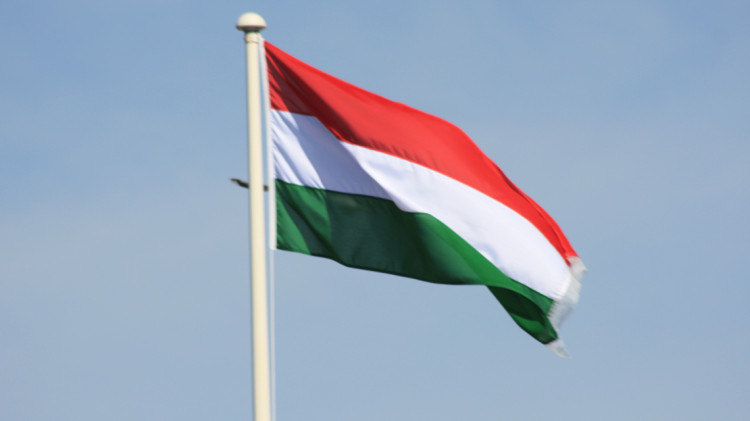An International Atomic Energy Agency (IAEA) team of nuclear and radiation safety experts today concluded a 12-day mission to review the regulatory framework for nuclear safety in Hungary.
The Integrated Regulatory Review Service (IRRS) team found that Hungarian officials were committed to strong regulatory oversight of the country's nuclear programme and the wide range of radiation-related activities.
Hungary faces challenges, including consolidating a complex distribution of regulatory responsibilities among different authorities, and ensuring effective independence of the regulatory body, the IRRS team also noted.
Amendments to relevant legislation that were approved by Parliament earlier this year will help address some of these issues by extending the supervisory role of Hungary's Atomic Energy Agency (HAEA), at a time when the country prepares to build new reactors to maintain the capacity of its Paks Nuclear Power Plant (NPP).
"Our review shows that Hungary has a comprehensive nuclear regulatory programme that is undergoing change primarily due to new power plant construction and realignment of responsibilities," said IRRS team leader Michael Johnson, Deputy Executive Director for Reactor and Preparedness Programs of the U.S. Nuclear Regulatory Commission.
"The team believes that consideration of its recommendations and suggestions related to improvements in independence, collaboration among authorities, and regulatory oversight will be beneficial as Hungary addresses this change," he said at the end of the mission.
The Hungarian Government had invited the peer review to compare the country's regulatory system and practices with those recommended in IAEA Safety Standards.
HAEA Director General Gyula Fichtinger said international peer reviews bring significant added value to the Hungarian regulatory framework. "The findings of the IRRS mission will help us to improve our activities," he said. Hungary will invite a follow-up mission after two to three years.
The 20-member IRRS team included regulatory experts from 11 IAEA Member States - Canada, Cuba, Finland, France, Greece, Pakistan, Slovenia, Sweden, the United Kingdom, the United States and the Netherlands - and four IAEA officials.
In Budapest, they met with Government officials, and with management and staff of the four primary authorities that comprise Hungary's regulatory body: HAEA, the Office of the Chief Medical Officer, the Budapest Capital Government Office Radiation Hygiene Decentre, and the Baranya County Government Office Department of Environmental Protection and Nature Conservation. The team also carried out site visits.
Greg Rzentkowski, Director of the IAEA Division of Nuclear Installation Safety, said Hungary demonstrated strong commitment to nuclear safety by inviting the mission.
"Throughout the mission, the IRRS review team experienced full cooperation in the regulatory, technical, and policy issues by all parties in a very open and transparent manner," he said, also noting that Hungary had decided to make the final mission report public.
The IRRS team identified good practices, including:
- Hungary has conducted a multi-unit NPP severe accident emergency exercise;
- HAEA has established indicators to monitor the safety performance of the two research reactors and the interim spent fuel storage installation; and
- HAEA has developed an effective database for knowledge and experience gained during the use of nuclear energy in Hungary.
The mission provided recommendations and suggestions for improvement of the governmental infrastructure and the regulatory body, including:
- The Government should implement appropriate provisions to ensure the regulatory body’s effective independence;
- The Government should ensure that regulatory authorities have sufficient staffing and other resources;
- The Government should consider measures to foster effective coordination and collaboration between regulatory authorities;
- The regulatory body should ensure that its organisation enables effective fulfilment of its statutory obligations; and
- The regulatory body should enhance its management systems and develop procedures to promote and support a strong safety culture.
The final mission report will be provided to the Hungarian Government in about three months.
Quick Facts
Hungary has four operational nuclear power reactors, at the Paks plant. They accounted for nearly 54 percent of its electricity production in 2014. It also has an interim spent fuel storage facility, two research reactors, two radioactive waste repositories and many users of radioactive sources in medicine, industry and research.
About IRRS Missions
IRRS missions are designed to strengthen the effectiveness of the national nuclear regulatory infrastructure, while recognizing the ultimate responsibility of each State to ensure nuclear safety. This is done through consideration of regulatory, technical and policy issues, with comparisons against IAEA Safety Standards, and, where appropriate, good practices elsewhere.
More information about IRRS missions is available on the IAEA Website.


